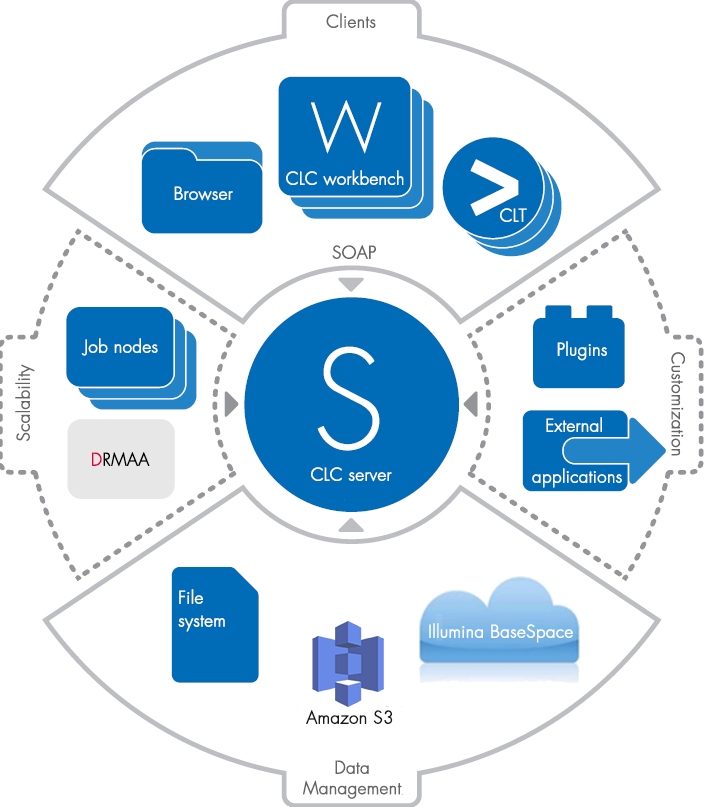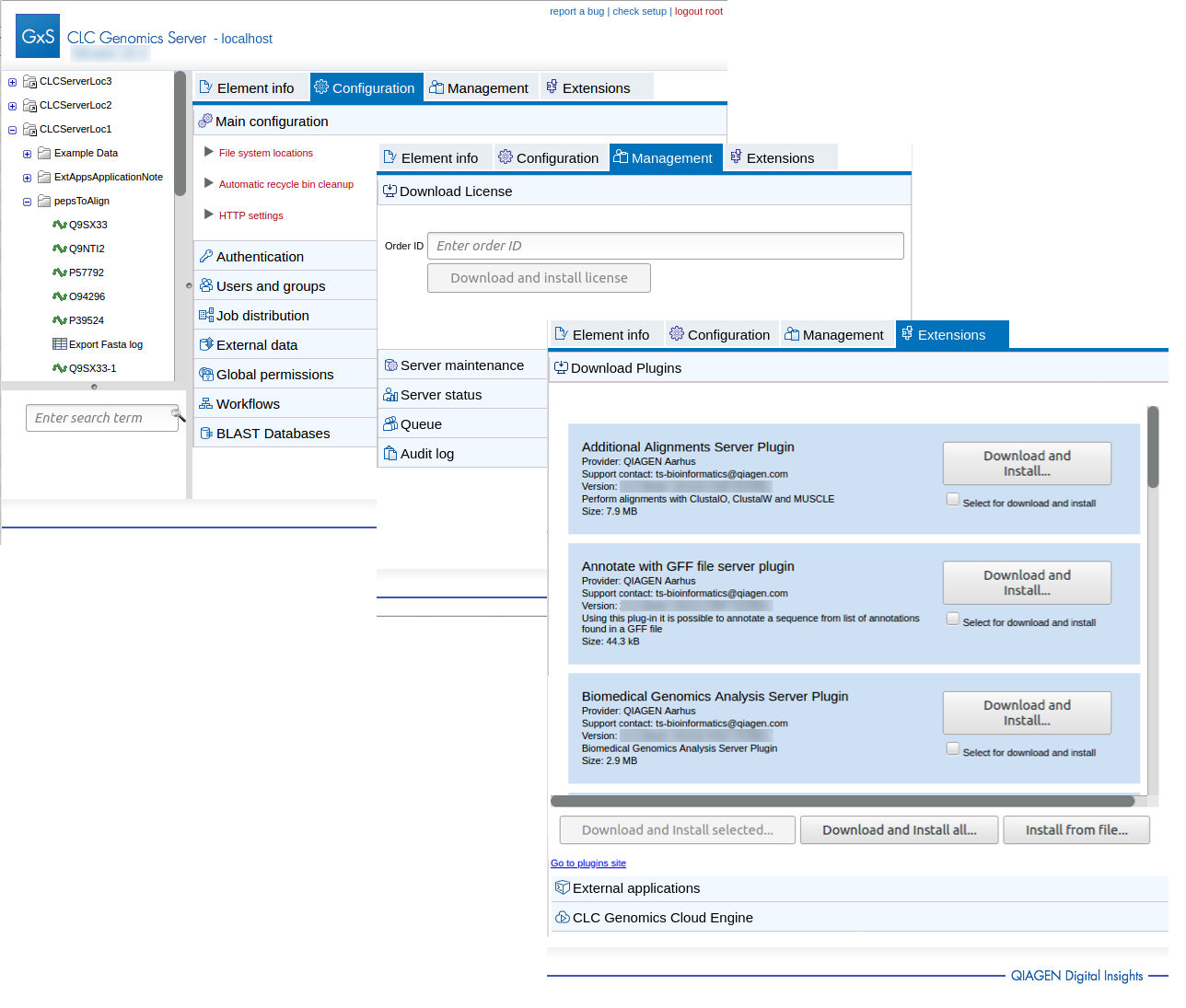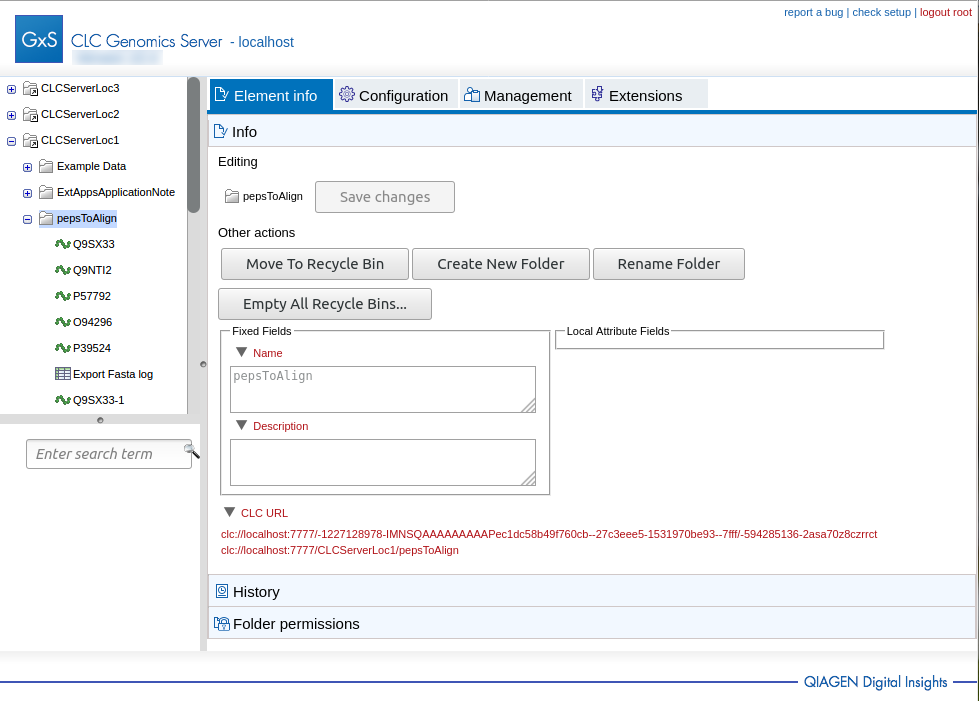Introduction
Welcome to CLC Server 23.0, a central element of the CLC product line enterprise solutions.
The latest version of this user manual can be found in pdf and html formats at https://digitalinsights.qiagen.com/technical-support/manuals/.
You can get an overview of the server solution in figure 1.1. The software depicted here is for research purposes only.

Figure 1.1: An overview of the CLC Server solution. Running jobs on nodes requires a license that supports this.
Using server software means that data can be stored centrally and analyses run on a central machine rather than a personal computer. After logging in from a CLC Workbench, data on the server will be listed in the Workbench's Navigation Area and analyses can be started as usual, but with a choice of where to run the analysis: on the CLC Workbench or on the CLC Server.
After a job is launched to run on the server, the CLC Workbench can be used for other work, or be closed. The job status and results of such jobs are reported in the Workbench, either in the same working session, or the next time the Workbench is started up if it has been closed.
Adminstering a CLC Server
The CLC Server is administered through a web client. This client is intended primarily for administration tasks, although non-admin users can log in and see listings of the data they have access to via the CLC Server.
There are 4 top level tabs visible when an administrator logs into the client, each containing a set of subtabs for tasks related to that area (figures 1.2 and 1.3).

Figure 1.2: Adminstration and management of a CLC Server is done primarily via the web administrative client. The contents of the three tabs containing primary administrative functionality are shown here.

Figure 1.3: Adminstration actions relating to data stored in CLC Server file locations is done under the Element info tab. Standard users also have access to this tab, but admin-related functionality is not made visible in that case.
The rest of this manual covers how to install and configure a CLC Server, and how to expand its functionality through the installation of plugins, workflows, and provision of external applications.
Some CLC Server administration tasks can also be carried out using the CLC Server Command Line Tools. A full list of tools commands available can be listed using the clcserver command, as described at https://resources.qiagenbioinformatics.com/manuals/clcservercommandlinetools/current/index.php?manual=Basic_usage.html.
Subsections
